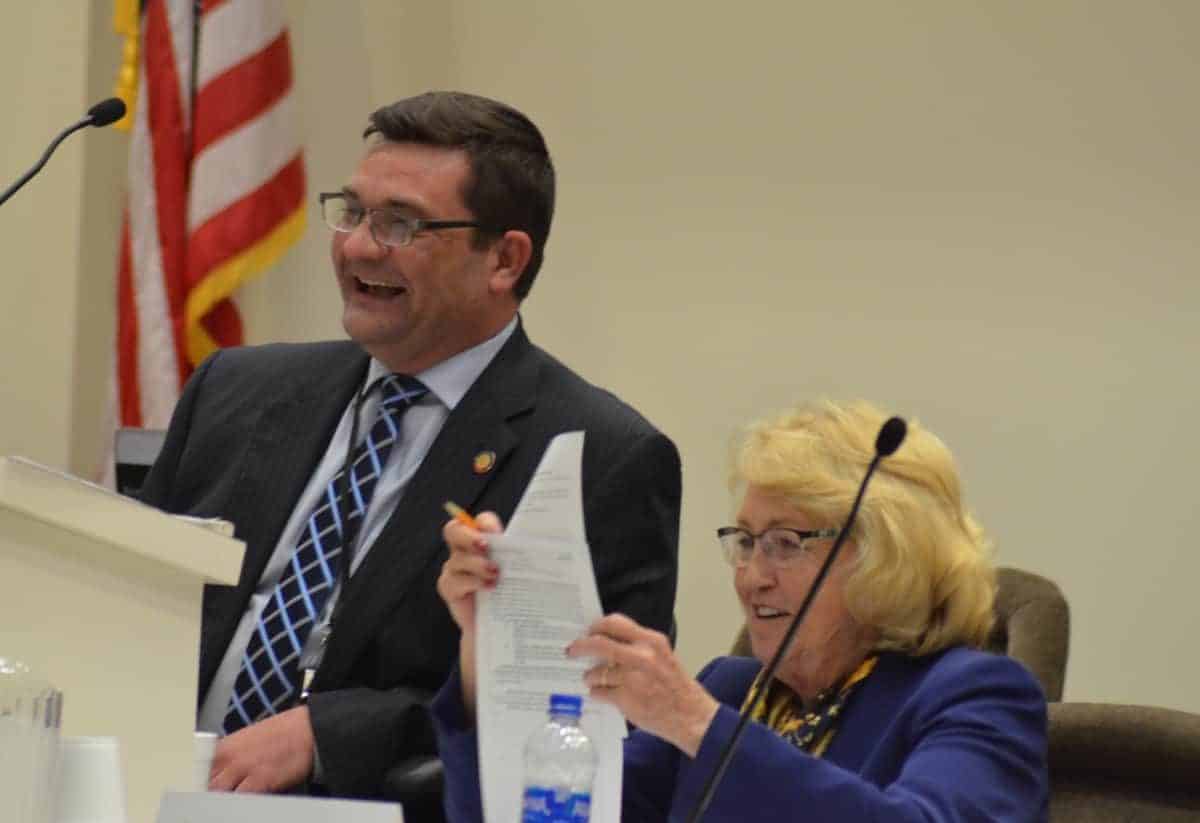

The House K-12 committee tackled the ever-present issue of what to do with the state’s school performance grades today.
A suite of bills in the committee focused on the formula that makes up the grades, the grade scale used, and the definition of low-performing schools which stems from the grades. All of the bills in committee today received a favorable vote from the lawmakers and will go now to the House rules committee.
“These bills are all solutions to a problem that we know exists,” said Rep. Linda Johnson, R-Cabarrus, a chair of the committee.
House Bill 354 would change the makeup of the school performance grades. Currently, they are comprised of a formula that includes 80 percent academic achievement and 20 percent academic growth. The bill would change that formula to a 50-50 split.
House Bill 266, on the other hand, would modify the school performance grades so that each school gets a grade for both academic achievement and academic growth.
Both of these ideas are ones that have been considered before over the years. The school performance grade formula has been a subject of steady debate in the General Assembly, with some lawmakers advocating for academic growth playing a bigger part in the grades because they say it is a more effective indicator of how well teachers are doing their jobs. Growth is essentially how much a student learns in a year, whereas academic performance measures how well students do on standardized tests. Proponents of keeping academic performance front and center say it measures whether students are where the state wants them to be education-wise, so it’s important to keep the emphasis on it.
Johnson said that if the state wants to know how far students are behind and how long it’s going to take to get them on grade level, then the state needs a different approach to the school performance grades. She also echoed a sentiment that many detractors of the school performance grades have: that bad school performance grades as they now exist simply correlate with a high concentrations of low-income students.
“If we don’t change these numbers, or we don’t get a better system, all we’re ever going to know is that we have low-wealth schools,” Johnson said.
Rep. Craig Horn, R-Union, a chair of the committee, sponsored House Bill 354. He said that his bill would increase the emphasis on growth, which he thinks is essential.
“My definition of education is growth. That’s what we do,” he said. “We move kids from here to there. That’s the very essence of education.”
A couple of lawmakers brought up the fact that the two bills related to the makeup of the school performance grades seemed mutually exclusive.
“It seems to boil down to us having to choose between the two,” said Rep. Mark Brody, R-Anson.
He went on to ask Horn why he chose to bring the bill that would keep one school performance grade but change its composition.
Horn said that one reason is because the state is already familiar with having one grade for each school. He also said there may be some structural challenges related to the Federal Every Student Succeeds Act (ESSA), which has certain reporting requirements for states.
“Perhaps it’s the road of least resistance, but I’ve found that incremental change is not only easier to implement but more effective in the long run,” Horn said.
Rep. Jeffrey Elmore, R-Wilkes, a chair of the committee, said he thinks either school performance grade bill increases transparency more so than the system the state currently has.
Rep. Dennis Riddell, R-Alamance, sponsored the bill that would split the grades into two, one for growth and one for achievement. However, he was also a co-sponsor of Horn’s bill on the school performance grades. He told the lawmakers that the House can send a “menu” of options over to the Senate, and it doesn’t have to choose one bill over the other.
But he also advocated for his own bill, saying that two separate scores provide more information to those looking at the school performance grades as a measure of quality.
Rep. Graig Meyer, D-Orange, said he appreciated Horn’s incremental approach, but that if you look at the states with the “best” grading scales, they are much more complicated than just giving one grade. He threw his support behind Riddell’s plan.
“I have to say that I think we can be much more audacious than just changing the formula to 50/50,” he said.
Another bill in the committee, House Bill 362, would maintain the 15-point grade scale for the school performance grades. Currently, the grades are on a 15-point scale where 85-100 is an A and so on down the line. That is set to change to a 10-point scale next year and could mean an influx of newly-labeled low-performing schools. At the last release of the school performance grades, there were 476 low performing schools — a number that could rise considerably if the grade scale changed.
“This bill is simply a matter of putting into law what we have been doing,” said Rep. Craig Horn, R-Union, one of the sponsors of the bill. “It doesn’t change any rules.”
The grades were originally envisioned to be on a 10-point grade scale. However, lawmakers decided to ease their way into that scale, so for the first two years, they used 15 points. The third year was supposed to be the first to actually use the 10-point scale, but lawmakers extended the 15-point scale for another year and have continued doing so ever since, Horn said.
House Bill 276 would modify the definition of a low-performing school. Currently, a low-performing school is a school that has a D or F grade and has not exceeded growth. The bill would make it so that a D or F school that met or exceeded growth would not be considered low performing. Riddell also sponsored this bill.
“To tag a school as low-performing when there is growth taking place … is unfair to the teachers, unfair to the students, unfair to the parents,” he said.
He explained that under his bill, the number of schools labeled as low-performing would have dropped dramatically during the last release of the school performance grades.
House Bill 295 also received a favorable vote during the committee. It would prohibit corporal punishment in schools. All school districts in the state currently ban corporal punishment.
If you want to see how schools in North Carolina would fare under different compositions of the school performance grades, use this map.
Users can adjust the growth weight (set at the current 20 percent) and point scale (set at the current 15-point) and search for any district or school. There are three additional filters, one for student population (a proxy for school size), one for grade levels offered, and one for percentage of students eligible for free or reduced-price lunch (FRL) (a proxy for student poverty). All filters in the sidebar control the map and accompanying bar chart below.



